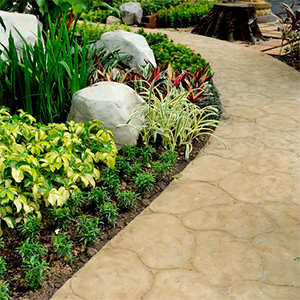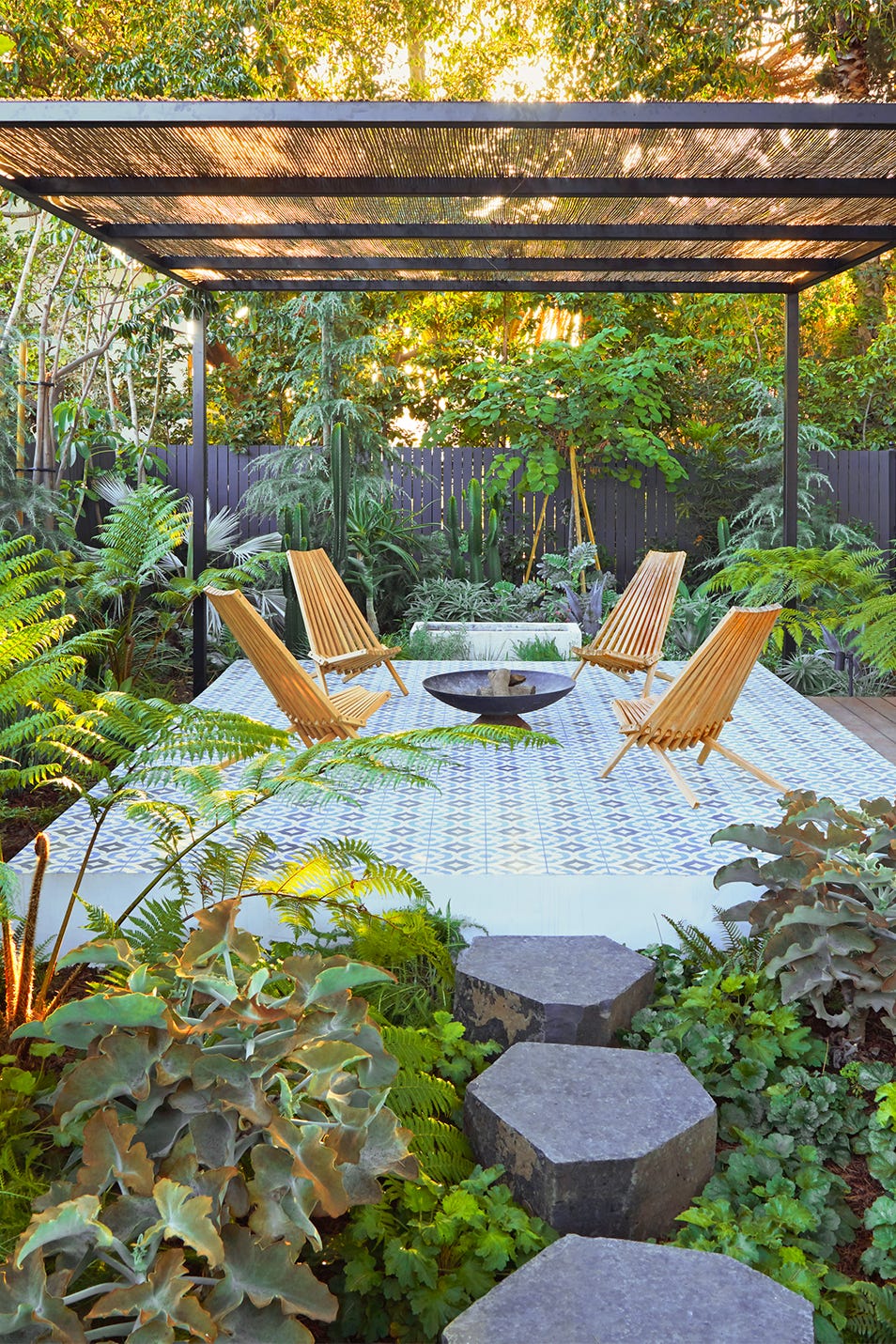Lawn Cleanup Jacksonville: Maintain Your Lawn Beautiful with Specialist Lawn Treatment
Lawn Cleanup Jacksonville: Maintain Your Lawn Beautiful with Specialist Lawn Treatment
Blog Article
Elevate Your Residential property's Visual With Sustainable Landscaping Layouts and Eco-Friendly Practices

Advantages of Sustainable Landscaping
Executing sustainable landscape design techniques not only conserves natural deposits but also promotes biodiversity and enhances overall environmental health and wellness. By picking green landscape design strategies, building proprietors can enjoy a wide variety of benefits that extend beyond just aesthetic charm. One considerable benefit is the reduction of water usage through the usage of drought-resistant plants, rain gardens, and efficient irrigation systems. This not only reduces utility costs however additionally adds to water preservation initiatives in the area.
In addition, lasting landscaping can boost soil wellness by lessening making use of chemical fertilizers and pesticides, thus producing a healthier setting for plant development and helpful soil microorganisms. This, in turn, enhances the general strength of the landscape to hold up against ecological stress factors and environment modification impacts - landscaping companies Jacksonville. Additionally, lasting landscape design practices can attract varied wildlife, consisting of pollinators like butterflies and bees, cultivating a more balanced and lively ecosystem within the building
Incorporating Native Plants
To construct upon the benefits of sustainable landscaping, a critical concentrate on incorporating indigenous plants can further boost ecological strength and promote biodiversity within the landscape. Native plants are types that naturally take place in a specific location and have progressed to grow in the regional environment, soil problems, and ecological community. By including indigenous plants in landscape design styles, residential property proprietors can reduce water use, minimize the requirement for chemical pesticides and fertilizers, and sustain the regional wild animals populace.
Including indigenous plants also assists in protecting the unique character and identity of an area's plants. These plants typically need much less upkeep as soon as developed, making them a economical and lasting landscaping option in the future. Furthermore, indigenous plants can bring in native pollinators like butterflies and , adding to the general health of the ecosystem.
When choosing native plants for landscape design projects, it is necessary to select varieties that are well-suited to the details environmental conditions of the site. Consulting with organic yards or regional baby rooms can supply important guidance on picking the right native plants for a certain location. By integrating indigenous plants into landscape design layouts, homeowner can create gorgeous, sustainable outside rooms that benefit both the setting and the area.

Water Preservation Techniques
Efficient watering you could check here techniques play a crucial role in sustainable landscape design methods, guaranteeing ideal water conservation efforts in outdoor areas. Implementing strategies such as drip watering, rain harvesting, and wise watering systems can significantly reduce water wastage while maintaining a healthy landscape. Trickle watering provides water directly to the roots of plants, decreasing evaporation and overflow. Rain harvesting involves gathering rainwater from roof coverings and saving it for later use in irrigation, decreasing the dependence on municipal water sources. Smart irrigation systems make use of weather information and dirt wetness degrees to readjust sprinkling timetables, preventing overwatering and promoting water effectiveness.
In enhancement to advanced irrigation methods, xeriscaping is one more water-saving landscape design method that focuses on using drought-resistant plants, mulch, and reliable irrigation to develop a low-water landscape design - lawn cleanup Jacksonville. By picking indigenous plants that are fit to the neighborhood environment and dirt problems, building proprietors can decrease the requirement for important site excessive watering, ultimately saving water and promoting a sustainable outside environment
Eco-Friendly Hardscaping Concepts
Enhancing outside areas with eco-friendly hardscaping attributes can add significantly to sustainable landscaping techniques. When thinking about hardscaping elements, select materials like recovered timber, recycled concrete, or all-natural stone to minimize ecological effect. These materials not only add a special aesthetic allure to your outdoor space but also minimize the requirement for new resources removal.
Applying permeable paving choices such as gravel or absorptive concrete can aid lower water runoff and advertise groundwater recharge. These alternatives permit rain to seep right into the ground, avoiding erosion and minimizing the concern on stormwater systems.
Integrating indigenous plants into hardscaping layouts can better boost eco-friendliness by supporting regional wild animals and minimizing the requirement for too much watering or chemical therapies. By integrating eco-friendly wall surfaces or upright yards, you can present a lot more plants right into metropolitan setups, boosting air high quality and biodiversity.
Integrating energy-efficient lights, such as solar-powered LEDs, right into hardscaping styles can lower electrical power intake and lower your home's carbon footprint. Focusing on environmentally friendly hardscaping concepts not just boosts the elegance of your outside space however also shows a dedication to environmental stewardship.
Maintenance Tips for Sustainable Landscapes
:max_bytes(150000):strip_icc()/2583801_toddd_49-1-bc209c65ca1a4917afe2f2cbc437027c.jpg)
Consistently prune plants to advertise healthy and balanced development and stop overgrowth that can cause pest problems or conditions. Usage natural fertilizers to nourish the dirt and plants without unsafe chemicals that can leach into the atmosphere. For hardscaping aspects, such as permeable pavers or stone pathways, regularly clean them to stop debris accumulation and preserve their performance. By staying aggressive with upkeep jobs, you can maintain the beauty and sustainability of your landscape for years ahead.
Final Thought
In final thought, sustainable landscaping practices use various advantages for homeowner, from enhancing the aesthetic charm of the surroundings to promoting environmental preservation. By incorporating native plants, executing water conservation strategies, and making use of green hardscaping ideas, homeowner can develop stunning landscapes that are also ecologically liable. With proper maintenance, sustainable landscapes can contribute and prosper to a much healthier community for both humans and wildlife.
Furthermore, sustainable landscape design can improve soil health and wellness by reducing the use of chemical plant foods and pesticides, thereby developing a healthier atmosphere for plant development and beneficial dirt microorganisms.To develop upon the advantages of lasting landscaping, a strategic focus on incorporating native plants can further enhance environmental durability and advertise biodiversity within the landscape. By consisting of indigenous plants in landscaping layouts, residential property proprietors can minimize water use, lessen the requirement for chemical pesticides and fertilizers, and support the neighborhood wild animals population.
These plants commonly call for less upkeep once developed, making them a economical and sustainable landscape design option in the long run. By integrating native plants right into landscaping layouts, residential property owners can develop stunning, sustainable outside areas that profit both the community and the environment.
Report this page